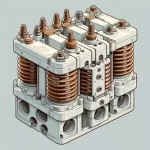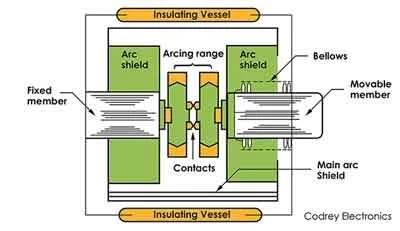Vacuum Circuit Breakers
A Look Inside the Construction and Components of Vacuum Circuit Breakers
Selectivity and Coordination in VCB Design
Vacuum Circuit Breakers

Vacuum Circuit Breaker Applications Explained
Vacuum Circuit Breakers (VCBs) have emerged as a preferred choice for a wide range of applications across the electrical engineering landscape, thanks to their distinctive advantages such as high reliability, long service life, and minimal maintenance requirements. VCBs operate by extinguishing the arc formed during the interruption of current flow in a vacuum environment, which is an excellent insulator. This functionality allows them to be used in various settings, from industrial applications to power generation...
Related Articles
Selectivity and Coordination in VCB Design
Selectivity and coordination in electrical systems are essential concepts that ensure reliable operation and protection of the network. These principles are particularly crucial when designing and implementing vacuum circuit breakers (VCBs) in electrical protection schemes. Selectivity ensures that...
The Role of VCBs in Aging Infrastructure
Vacuum circuit breakers (VCBs) are a cornerstone in the domain of electrical protection, offering significant benefits in terms of reliability, maintenance, and safety. As electrical infrastructure ages and the demand for modern, efficient, and safe systems increases, the integration of VCBs into...

Vacuum Circuit Breakers: An In-Depth Look
Vacuum Circuit Breakers (VCBs) are a critical component in electrical networks, playing a vital role in medium voltage (above 1 kV) applications. They function as switching devices, interrupting short-circuit currents and enabling operational switching (on-off operations) of individual circuits or...

Vacuum Circuit Breaker Advantages and Disadvantages
Vacuum Circuit Breakers (VCBs) have gained prominence in the electrical industry due to their unique operating mechanism and numerous advantages. However, like any technology, they also have certain limitations. This article delves into both the advantages and disadvantages of Vacuum Circuit...
Vacuum Integrity and Maintenance in VCBs
Vacuum Circuit Breakers (VCBs) are a critical component in modern electrical protection systems, offering high reliability and low maintenance. However, maintaining the vacuum integrity of these breakers is essential for ensuring their safety and effectiveness. This article discusses the methods...
Selectivity and Coordination in VCB Design
Selectivity and coordination in electrical systems are essential concepts that ensure reliable operation and protection of the network. These principles are particularly crucial when designing and implementing vacuum circuit breakers (VCBs) in electrical protection schemes. Selectivity ensures that...
The Role of VCBs in Aging Infrastructure
Vacuum circuit breakers (VCBs) are a cornerstone in the domain of electrical protection, offering significant benefits in terms of reliability, maintenance, and safety. As electrical infrastructure ages and the demand for modern, efficient, and safe systems increases, the integration of VCBs into...

Vacuum Circuit Breaker Applications Explained
Vacuum Circuit Breakers (VCBs) have emerged as a preferred choice for a wide range of applications across the electrical engineering landscape, thanks to their distinctive advantages such as high reliability, long service life, and minimal maintenance requirements. VCBs operate by extinguishing the...

Vacuum Circuit Breaker Advantages and Disadvantages
Vacuum Circuit Breakers (VCBs) have gained prominence in the electrical industry due to their unique operating mechanism and numerous advantages. However, like any technology, they also have certain limitations. This article delves into both the advantages and disadvantages of Vacuum Circuit...

A Look Inside the Construction and Components of Vacuum Circuit Breakers
Vacuum circuit breakers (VCBs) act as silent guardians within power systems, safeguarding equipment and ensuring grid stability by interrupting current flow during faults. This seemingly simple function relies on a complex and intricate internal construction. This article delves into the essential...
